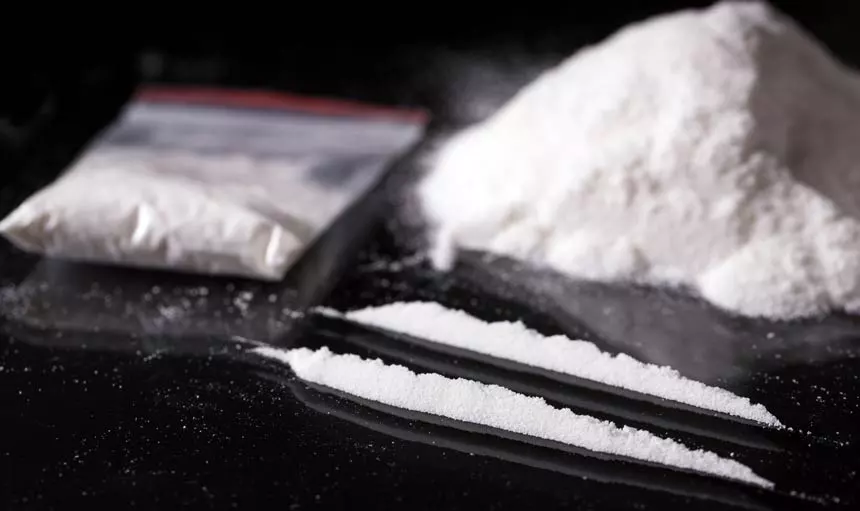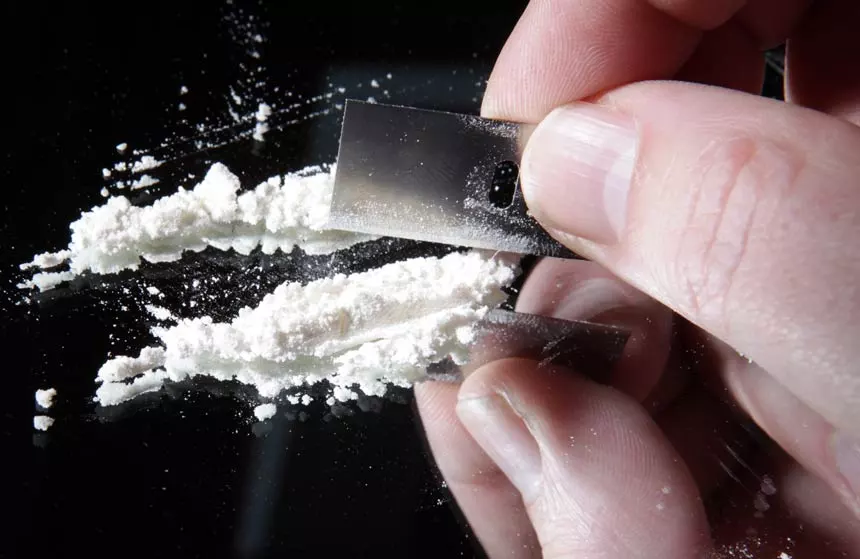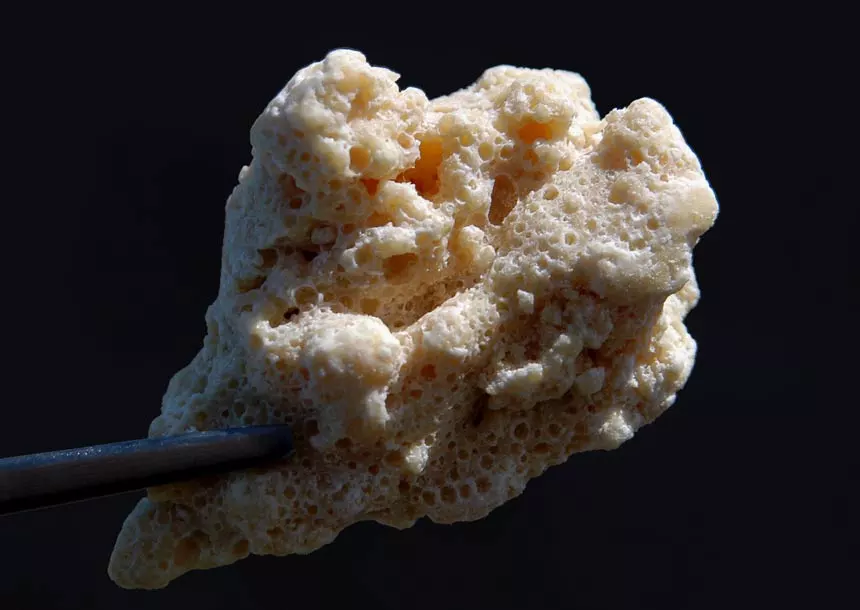Cocaine: The Basics
Cocaine is a highly addictive stimulant drug that has a major influence on the drug use marketplace. It has been responsible for many cocaine overdose deaths and is classified as a Schedule II drug determined and enforced by the Drug Enforcement Administration (DEA).
This classification means that cocaine has very limited medical value and a high potential for abuse. With that being said, a large portion of cocaine found on the market is illegal cocaine and it has become one of the most widely available illicit drugs around. With that said, where does cocaine come from?
Although it is one of the most popular drugs around in the illegal marketplace, most people don’t know where it comes from, or just have a dim sense of ‘somewhere in South America.’
Keep reading to find out more details about the birth of modern cocaine, as well as the path that cocaine takes to the American market.
The Origins and History Of Cocaine

The first recorded use of cocaine, or rather the coca leaves which cocaine is derived from, is from indigenous cultures in South America. They would chew the leaves of coca plants as a way to boost energy and mood.
The chemical compound itself, Cocaine Hydrochloride (HCI), was first synthesized in 1859 by Albert Niemann. This drug quickly became esteemed in the medical field, in that it worked well for various issues such as treating fatigue and headaches.
As this drug was continuously studied and developed, it was also medically used as a local anesthetic and as a treatment for morphine addiction. The praise and favorable view towards cocaine, unfortunately, held strong for a while and it became a part of many products.
Common products, such as Coca-Cola, contained cocaine as an ingredient which also held true for many other common items. This use of cocaine in commonly used items led to a mass amount of the American public ingesting significant amounts of cocaine.
Over decades since its discovery, the addictive potential of cocaine was gradually acknowledged and confirmed through studies as well as the writing and experience of such luminaries as Sigmund Freud.
Where Does Cocaine Come From: Popular Use in Society

Due to this, cocaine became regulated in 1914 and caused the common use of cocaine to be slowed dramatically. The importation of cocaine was stopped. This regulation worked for about 50 years until cocaine began to resurface in the 1960s.
In 1970, Cocaine was declared a Schedule II drug in the United States and quickly was switched to very limited uses in the medical field. Despite this, it was still overlooked as an issue in society. It wasn’t until around the 1980s that cocaine addiction was begun to be taken seriously.
Perhaps not coincidentally, this time period also signified the rise of crack cocaine in America. The process of crack production, while not complicated, uses sodium bicarbonate (baking soda) to convert cocaine to an easily smokable form. This form of the drug is even more damaging and addictive than its powdered counterpart.
Alongside the advent of crack production across America came greater public awareness of the risks and potential dangers of regular cocaine use.
How Is Cocaine Produced?
Beyond the history of cocaine as a whole, how is it produced and how is cocaine made? Cocaine, or more specifically, the coca plant, is primarily found in Peru, Bolivia, and Colombia in South America. The South American coca plant has been used for centuries by indigenous people as a mild stimulant that can raise mood and make long days of work easier.
Worth noting is that modern drug cartels are not satisfied with the existing potency of coca leaves, and have begun spreading preferred varieties of coca plants to regions of cultivation throughout South America. With new types of coca being more resistant to mold and with higher yields, these forms of genetically modified coca plants may be the future of coca farming.
The natural form of the plant is not a very potent stimulant, however, after processing and isolating Cocaine Hydrochloride, a very pure and potent solution is left. There are 3 phases in the cocaine production process: coca leaves to coca paste, coca paste to cocaine base, and cocaine base to Cocaine Hydrochloride (HCI).
There are a variety of different chemicals that are utilized in the synthesizing of cocaine including kerosene, sulfuric acid, ammonia, ether, and acetone. These chemicals are utilized to help purify or remove substances that aren’t hydrochloride-based.
What Is Cutting Cocaine?

Cutting cocaine is simply referring to diluting or mixing cocaine with another substance. This is done as a means to increase profit and can be fairly common in the drug market. Cutting cocaine is similarly what makes illegal cocaine, and illegal drugs in general, so dangerous.
An individual must place their trust in their drug dealer that they are providing them with an untampered product. Drug dealers most likely do not have their best interests in mind, and operate out of a profit motive.
What Is Cocaine Cut With?
Cocaine is cut with items that can closely resemble pure cocaine. There are many ingredients in a kitchen that can accomplish this. These varieties of items in which powdered cocaine can be cut with which include:
- Inositol
- Mannitol
- Baking sugar
- Baking soda
These items are significantly cheaper than cocaine and can go unnoticed while allowing a drug dealer to maximize their profits. Unfortunately, cocaine can also be cut with other drugs as a way to make them more addictive and cause individuals to crave more of the substance. This can lead to an overdose or even more harmful situations within an individual’s body.
If you or a loved one regularly use cocaine, please use a fentanyl testing strip (now available nationwide) to ensure that you do not inadvertently overdose. A white powdery substance is very easy to contaminate and cut, and this powerful opioid is incredibly cheap and commonplace.
How Does Cocaine Affect Someone?
Cocaine is a stimulant drug that directly affects the central nervous system. It directly affects the neurotransmitters dopamine and norepinephrine. Neurotransmitters are chemical messengers which are naturally found within the brain.
Dopamine is a neurotransmitter responsible for feelings of motivation and well-being. Norepinephrine is responsible for the levels of energy within our bodies, blood pressure, and our fight-or-flight response.
When cocaine is ingested, they quickly enter the bloodstream and cocaine molecules enter the brain. These molecules work to stop dopamine and norepinephrine from being reabsorbed by the body.
This effect can vary in length depending on the method of ingestion. The effects of powdered cocaine last 15-30 minutes when an individual snorts the drug. This is the most common form of cocaine abuse.
The effects of cocaine last around 5-10 minutes when an individual smokes or injects cocaine. This is typically done to achieve a more intense high and rapid high. Cocaine immediately enters the bloodstream through these methods.
How Is Cocaine Addictive?
Despite there being many different forms of cocaine, all forms of cocaine are addictive. The intensity of how addictive cocaine is can change depending on the form of cocaine but even still, all forms of cocaine are addictive.
As cocaine inhibits the reabsorption of dopamine and norepinephrine, individuals will experience a euphoric rush from the increased levels of the two neurotransmitters. This overload of dopamine reinforces the action and experience of ingesting cocaine.
Unfortunately, an individual becomes more tolerant of cocaine and requires larger amounts to produce the same effects. Just as quickly as an individual becomes tolerant, they can also become dependent upon the substance to maintain proper functions.
Individuals may soon be unable to properly inhibit cocaine use and struggle with cocaine addiction. This can happen with any of the forms of cocaine.
For more information about nature’s addictive substances, check out this exhibit by the Drug Enforcement Administration museum!
If you or a loved on are struggling with cocaine, please reach out to the helpline numbers listed on our site, and we will help you find effective forms of addiction treatment across the country!
What Are The Different Forms Of Cocaine?
As there are different forms of cocaine, they also have different effects on an individual. 3 out of 4 forms of cocaine are sold illegally and are highly dangerous. As the medicinal form of cocaine, cocaine hydrochloride, contains only about 4-10% of cocaine, it affirms that high amounts of cocaine can be severely harmful.
When answering: where does cocaine come from, it is important to consider the type. The illegal forms of cocaine are purer and typically contain higher concentrations of the substance. Despite the fact that illicit cocaine is often cut with other things and dilutes the purity, it still contains higher concentrations of cocaine than the medically available products.
Powder Cocaine
Powdered cocaine is the most common form of cocaine and is often referred to as pure cocaine or ‘raw’ cocaine. As a powder, this form of cocaine can be injected, snorted, or used orally.
This form of cocaine is most often snorted as a method of ingestion and so the nasal cavity faces the most effects. Some of these effects include the loss of smell, nosebleeds, and difficulties swallowing.
Crack Cocaine

Crack cocaine, or crack, is one of the most addictive forms of cocaine and potentially the most dangerous. Crack is typically smoked as its method of ingestion and rapidly begins affecting an individual once inhaled.
The continued or chronic use of crack cocaine can quickly lead to respiratory difficulties and irreversible damage done to your body. This also places you at a higher risk of pulmonary diseases.
Freebase Cocaine
Freebase cocaine is one of the more dangerous forms of cocaine. It is made by using ammonia to rid a cocaine base of hydrochloride to create crystallized cocaine and in working with these flammable substances, can be dangerously burned.
The other forms of cocaine do not hold the same risks as freebase cocaine and are most often used before this form of cocaine. This form of cocaine also holds similar health risks as crack cocaine.
Cocaine Hydrochloride
Cocaine hydrochloride is the medicinal form of cocaine that is mainly used as a local anesthetic. It is a cocaine paste that is applied orally or nasally through a spray, cotton swab, or absorbable material in the nose.
Since there are many other options for anesthetics, it is fairly rare for cocaine to be used in surgery.
How Is Cocaine Used?
There are many ways in which cocaine can be ingested by someone. As toxic as cocaine is, it can have a harmful effect on each of the parts of a person’s body. These methods include oral, nasal, intravenous, and inhalation as methods of ingestion.
Cocaine Withdrawal Symptoms
Withdrawal symptoms are one of the biggest reasons why individuals cannot stop using. They are highly relapse-provoking and cause individuals to turn back to substance use as a way to deal with their experiences.
Withdrawal symptoms can be very intense, uncomfortable, and even life-threatening in drastic situations. According to the National Institute on Drug Abuse (NIDA), some of the cocaine withdrawal symptoms include:
- Agitation and restless behavior
- Depression
- Fatigue
- Discomfort
- Increased appetite
- Nightmares
- Insomnia
- Cravings
- Anxiety
- Paranoia
- Irritability
It is best for an individual struggling with cocaine addiction to undergo a drug detoxification program. Keep reading to find out more about detoxification and addiction treatment for cocaine abuse.
Cocaine Addiction Treatment
With as dangerous of a drug as cocaine, it is important for addiction treatment services to be available to individuals in need. Drug abuse is a major issue in our society which makes it detrimental to have treatment for individuals struggling with drug abuse.
Cocaine addiction isn’t any different and requires addiction treatment in order to recover from. The first step towards recovery begins with a medical detox which can take 3-5 days but can last as long as 14 days in more severe cases of addiction.
After this, an individual is prepared to take on inpatient or outpatient addiction treatment. An individual is likely to receive addiction treatment for at least 90 days however, extended treatment, especially in severe cases of addiction, is highly recommended.
Medical Detox
Medical detox is a form of inpatient treatment in which an individual lives on-site at a treatment center to safely detox from a substance. This program works by providing an individual with the proper support they need to remove a substance from their body.
Medical staff will be available to provide an individual with 24-hour surveillance and care. This allows individuals to receive care as needed when it is needed. An individual will likely experience difficult withdrawals with cocaine detoxification and can benefit from this form of care.
Inpatient Treatment
Inpatient treatment is a form of treatment in which an individual lives on-site at a treatment center to receive treatment. This allows an individual to leave their current environment and live in a safe and stable environment.
Staying in a familiar location during the early stages of recovery may be relapse-provoking for some individuals and they may best benefit from removing themselves from that location.
An inpatient treatment facility will also have many recovery resources available to best support individuals through this difficult time. These resources can include treatments such as behavioral therapy, group therapy, and individual counseling.
Outpatient Treatment

Outpatient treatment is a form of treatment in which an individual receives treatment during the day and returns home after receiving treatment. This allows individuals to continue their responsibilities while also receiving treatment.
This option provides flexibility to individuals to allow them to continue with their daily experience. This form of treatment typically works best for individuals with mild to moderate withdrawal symptoms and who are at low risk of relapse.
For more information on cocaine addiction treatment, reach out to our recovery representatives at Find Addiction Rehabs for information on top options across the country!
Treatment for Cocaine Addiction: Found Here
Cocaine is a very dangerous and addictive drug that can have many negative effects on an individual’s life. Here at Find Addiction Rehabs, we can help find you the proper treatment you need.
Whether finding a treatment center in your location or connecting you with recovery tools and resources, our hotline is available 24/7 to make sure you can get the help you need, anytime you need it.
Addiction is a major issue and immensely difficult to overcome, especially when trying to manage it alone and without treatment. Call us today so we can help you find the right treatment for your needs!

